Kongsvegen
Record Glacier Retreat in Ny-Ålesund: Monitoring Insights from 2025
Text by Fieke Rader and Jack Kohler, the Norwegian Polar Institute
Pictures by Fieke Rader, Norwegian Polar Institute
Records continue to be broken in Ny-Ålesund and across the Arctic. If climate change were a competition, Ny-Ålesund would have earned an Olympic medal. Unfortunately, our records are nothing to be proud of.
This year’s Olympiad: the glacier Kronebreen.
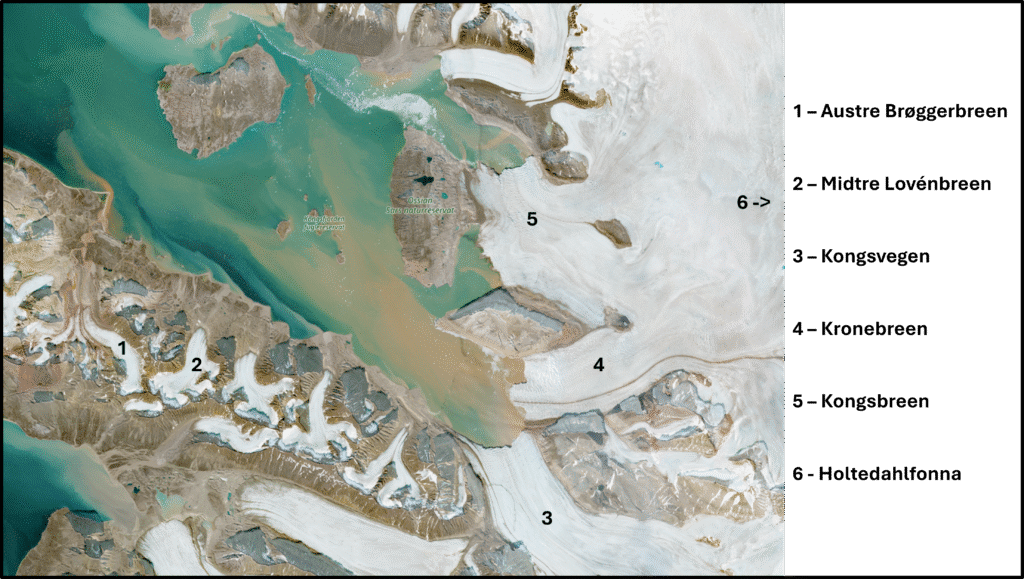
Decades of monitoring
Jack Kohler, a glaciologist at the Norwegian Polar Institute, has been studying glaciers around Ny-Ålesund since 1999. The first yearly monitoring of the closest glacier to Ny-Ålesund, Austre Brøggerbreen, started in 1967, with three other glaciers being added in subsequent years: Midtre Lovénbreen (since 1968), Kongsvegen (since 1987), and the combined glaciers system of Kronebreen and Holtedahlfonna (since 2003).
Each year, in spring and autumn, Jack works on what is known as the glacier mass balance. Stakes are installed in the ice along the length of the glacier, providing a reference for both snow accumulation and melt, as well as markers for determining glacier speeds.
At some point in late April or May, the winter snowpack reaches its maximum depth on the glaciers. The spring fieldwork is all about quantifying the winter balance using snow depth measurements. During this time, snow conditions usually allow the team to reach the glaciers by snowmobile, even though the increasingly positive temperatures and possibility for winter or spring rain presents challenges.
The melt season typically starts in June, continuing into September, or even as late as October in recent years. In autumn, the summer balance is quantified. Snow and ice melt is measured at the poles, as well as their positions, and any instruments such as on-glacier weather stations and continuously recording GPS instruments are maintained (e.g. batteries are replaced, data downloaded). The smaller glaciers closest to Ny-Ålesund can be reached on foot during the autumn, but the larger more distant and more heavily crevassed glaciers are harder to reach, so researchers use a helicopter to access these sites.
The difference between the winter accumulation and summer melt provides an estimate of the net balance at the stakes, which is then averaged to provide a single number for the entire glacier. The retrieved GPS data give insight into how the glacier is moving in response to the meltwater inputs into the glacier.
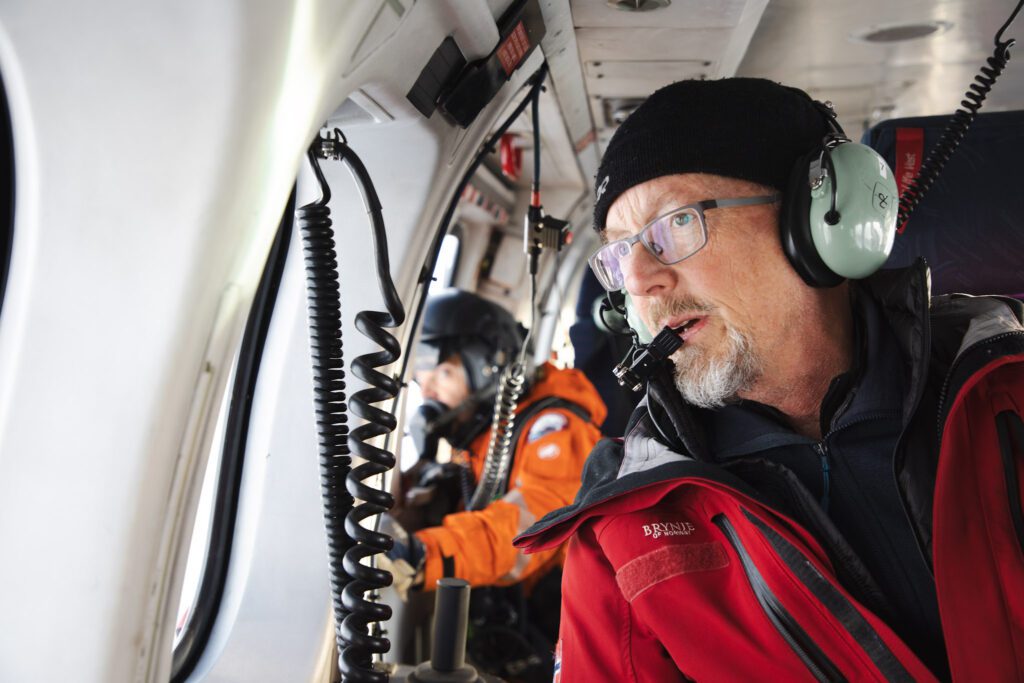
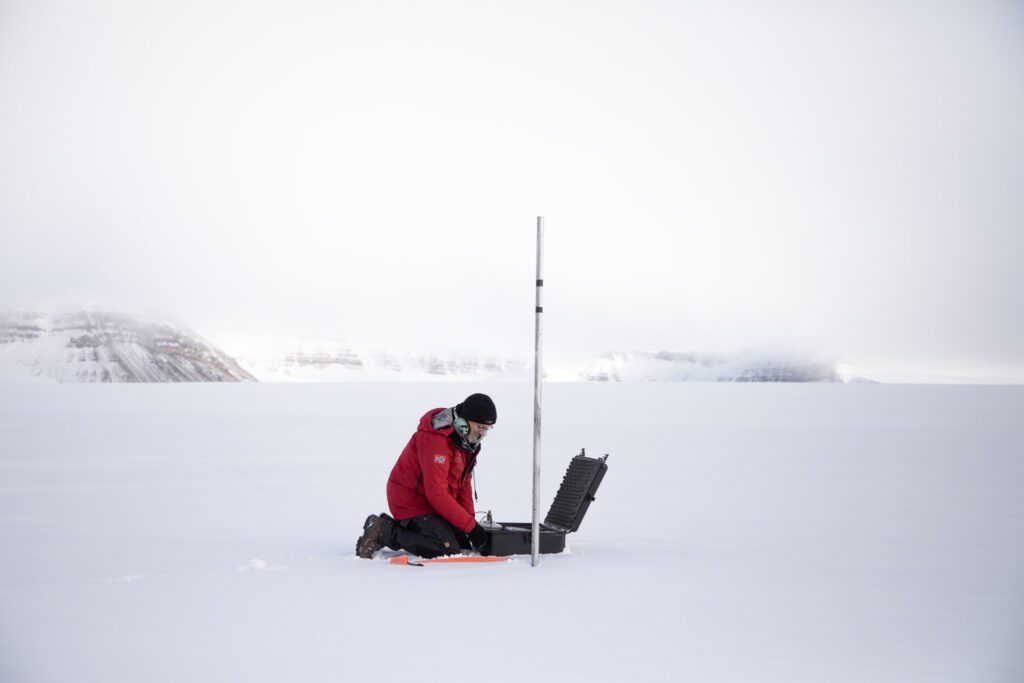
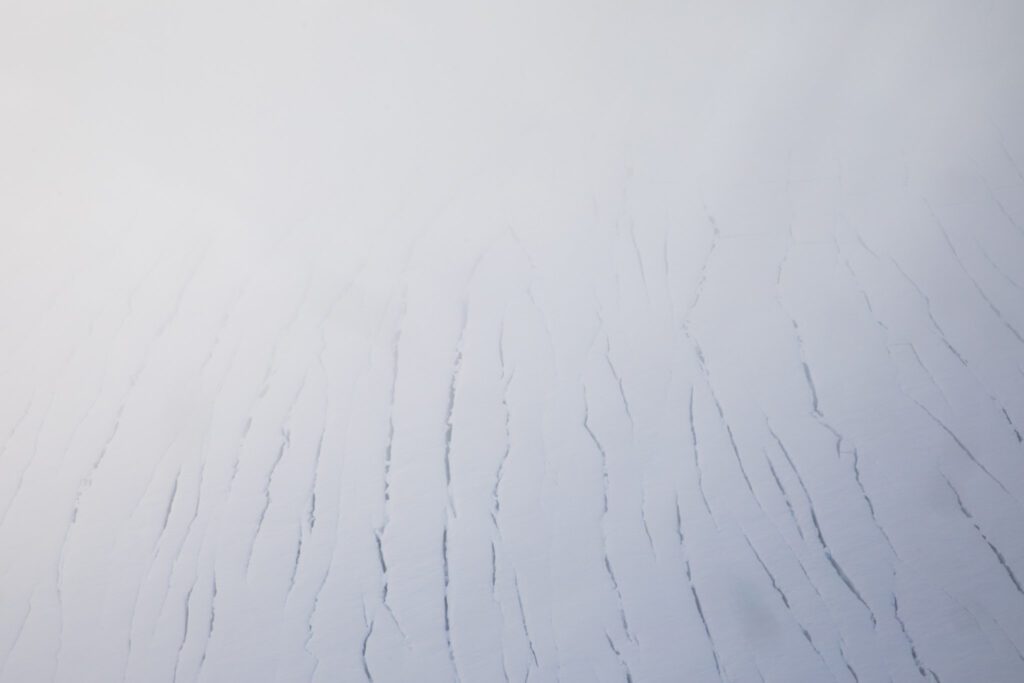

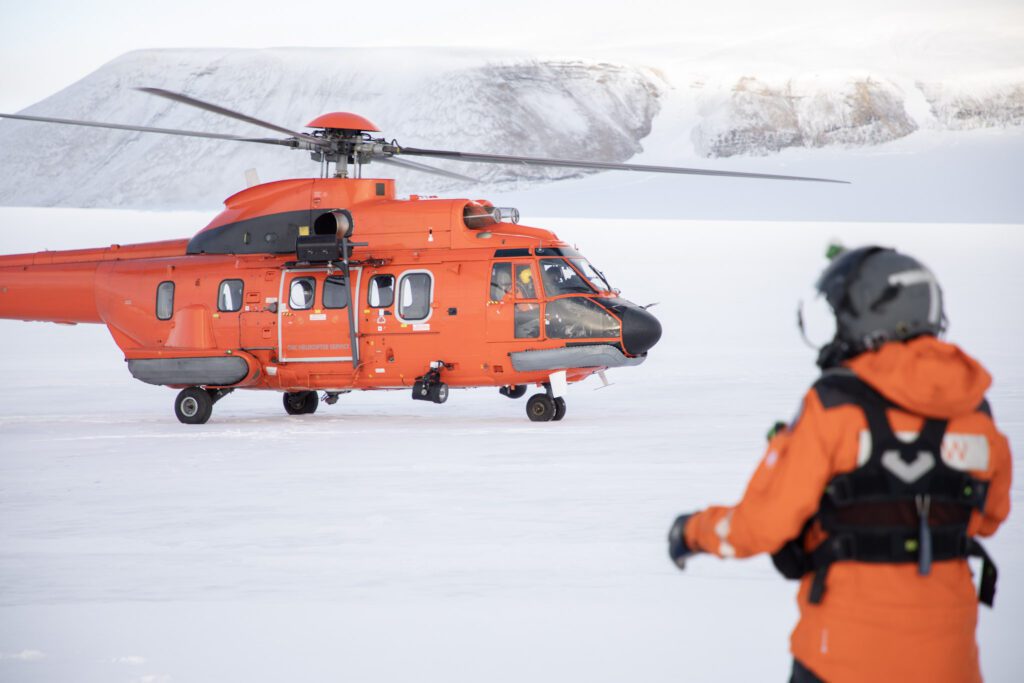

Mass balance results for 2025 and record melting in 2024
This year’s fieldwork showed that there was a loss of 1.5-2 meters of water equivalent on the monitored glaciers. This did not break the record loss set last year, but was still the third most negative net mass balance for the two small glaciers, and the second most negative for Kongsvegen. Due to limited helicopter time, it was not possible to make measurements on Kronebreen/Holtedahlfonna; the results for this glacier will need to wait until next spring, when the team can next visit.
The record melt of last year was not restricted to the Ny-Ålesund glaciers. Norwegian researchers published last month their results for 2024 in PNAS 1. They estimated that 1% of the total ice on Svalbard melted in 2024, which accounted for 10% of the sea-level rise contribution from all glaciers in the world. As much ice was lost from Svalbard as from Greenland, even though the Greenland Ice Sheet is 50 times larger than the glaciated area of on Svalbard.
Glacier retreat in 2025
Land-terminating glaciers such as Austre Brøggerbreen and Midtre Lovenbreen are thinning the fastest, due to the increasingly warmer air temperatures, and their relatively low elevation. As the glaciers thin, their fronts retreat. However, the retreat can be seen most dramatically in the tidewater glaciers, which end in the sea. Tidewater glaciers are not only melting and thinning due to increasing air temperatures, but are also to the warming seawater.
Glacier retreat can be monitored using old pictures, aerial photography and satellite imagery, to provide valuable information on how the glaciers looked like decades or in some case, even a century ago, and how this has changed over the years. The tidewater glaciers Kongsbreen and Kronebreen have both retreated by more than 5 kilometers since the 1990s, with 2 kilometers of retreat over just the last 5 years.
This year alone, the glacier fronts have visibly changed. Comparing satellite data from this year with last shows that Kronebreen has retreated by a record 715 meters, as of September 20th, the last day without clouds in the satellite imagery.
All indications are that the surface melt and frontal retreat is continuing; whereas temperatures usually drops to below zero around this time of year, we are still experiencing positive temperatures and – for Svalbard– heavy rainfalls. It is therefore likely that the final 2025 melt estimates will be even higher; the last word will await next spring when Jack and his colleagues are back again.

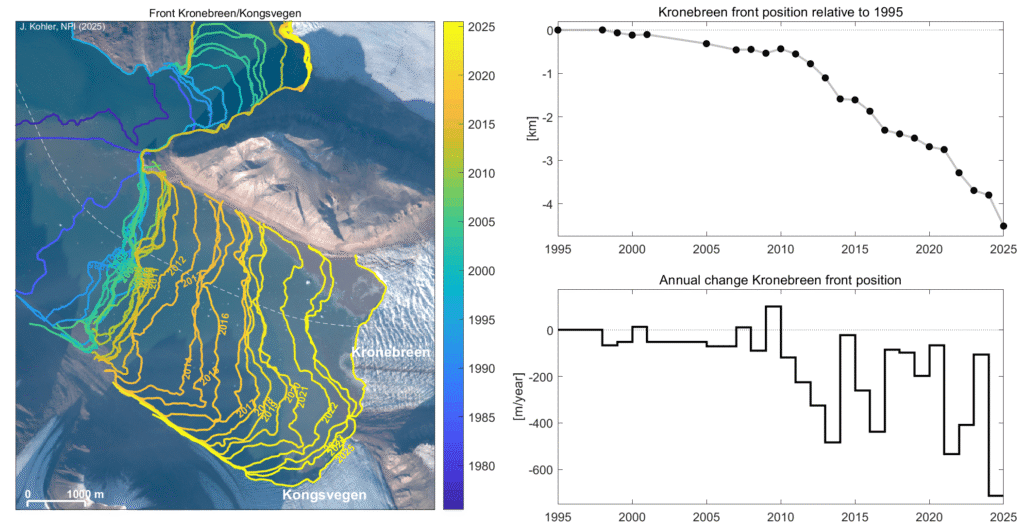
- T.V. Schuler, R.E. Benestad, K. Isaksen, H.P. Kierulf, J. Kohler, G. Moholdt, & L.S. Schmidt, Svalbard’s 2024 record summer: An early view of Arctic glacier meltdown?, Proc. Natl. Acad. Sci. U.S.A. 122 (34) e2503806122, https://doi.org/10.1073/pnas.2503806122 (2025). ↩︎
Did you find what you were looking for?